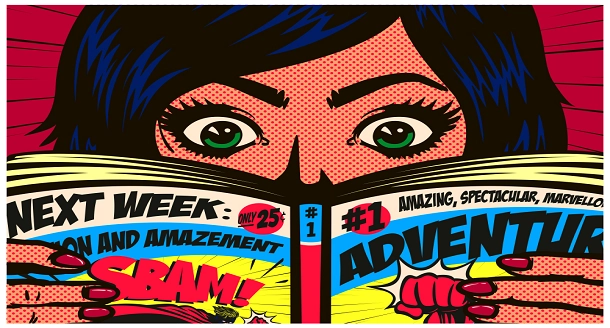
Are educational comics helpful for students learning? We will explore the benefits of educational comics for students. We will consider how these comics foster emotional intelligence and reading performance. Then, we will explore how these comics are adapted for use in classrooms and online. Ultimately, comics are a great way to increase the students’ emotional intelligence and improve their academic performance. Here are three ways educational comics can benefit students:
Benefits of comics for students
Many studies have shown the positive effects of comics on learning. Researchers have suggested that these books can help students with various learning dispositions and disabilities learn more efficiently. For example, kids with autism may be able to notice emotions in the comics and those with dyslexia may be able to learn about the world through pictures. Comics can also increase self-esteem and ensure that kids have a sense of fulfilment. Educational comics are also a great resource for schools as they can help educators achieve precise goals while saving money.
Many students have found that comics are a fun way to learn. Students enjoy comic books as they can convey vast amounts of information in a short amount of time. They can also retain the information that they learn more easily than text. They can also enhance reading skills and engage students in the learning process. Adding educational comics to the classroom has many benefits. These materials can be found in many different forms and can enhance learning in a variety of subjects.
educational comics can increase readers’ imagination
Additionally, educational comics can increase readers’ imaginations, which can improve learning. Readers are encouraged to use their creative skills, which helps them apply new learning strategies. They also tend to stick with a task when it is associated with something they enjoy. In addition to being an effective tool, comics can increase motivation and improve grades. And if you’re a teacher, you can even create comics for students that help students learn.
They improve reading performance
Children’s books can be challenging for young readers, but comics are appealing and eye-catching, and they have the added benefit of developing the skills necessary for sustained, deep reading. Furthermore, despite the stereotypes of males and females, both sexes have the ability to defy these stereotypes. Sones’ study in 1944 showed that the visual quality of comics was beneficial for improving reading performance. He divided 400 sixths to ninth-grade students into two groups and showed each group a story with both pictures and text. After one week, the groups were tested again and showed a higher level of achievement.
Children often respond positively to comics
Children often respond positively to comics, making them an excellent resource for motivating reluctant readers. These multi-modal learning tools use images to combine with text to express a variety of emotions and point-of-view. While many students enjoy reading fluently, some students are still having trouble writing or speaking, so comics can help with these problems. Furthermore, comics can help children learn idioms and slang that they otherwise wouldn’t pick up on.
Among students, cartoons can help shorten the logical leap needed to connect scientific concepts and applications. Students with less knowledge of science are more likely to benefit from the comics, while those with higher content knowledge don’t. The findings are encouraging for both sides. But it’s still necessary to do further research to determine whether comics actually have a positive impact on reading performance. If the research is successful, we may have an effective tool to use with our children.
They foster emotional intelligence
Developing children’s emotional intelligence through cartoons and toys is a proven way to help them grow up with more empathy and awareness of others’ feelings. Children’s emotional vocabulary develops during the formative years when they learn about the different types of emotions and the triggers that cause them. By understanding these differences, they can develop appropriate strategies when they are prompted to experience those emotions. In addition, they can use this language to relate their own feelings to other people’s feelings.
High emotional intelligence (EI) is an asset in the workplace. Those who possess high emotional intelligence often have a sense of humour, do not hold grudges and know when to disconnect. They are open-minded and slow to judge others. High EI individuals can deal with toxic people without getting frustrated and do not shy away from difficult conversations. However, there are some aspects of emotional intelligence that cannot be taught. For example, children who have high emotional intelligence may have a more difficult time dealing with negative people than others. They may have a hard time dealing with a difficult person, but they will not feel overwhelmed.
Children can also learn about emotions
Children can also learn about emotions through cartoons. Cartoons can help young children learn about Emotional Intelligence vocabulary and visual cues. In the series “Asher and Luna,” a child named Asher experiences hurt feelings and learns to empathize with him. The two children then learn how to resolve their differences using social skills and empathy. If your child is having a hard time dealing with an emotion, consider using educational comics as a way to help them develop this skill.
Author Bio
Jesse Pinkman is a research-based content writer, who works for Cognizantt, a globally recognised wordpress development agency uk and Research Prospect, a Tjenester til at skrive afhandlinger og essays. Jesse Pinkman holds a PhD degree in mass communication. He loves to express his views on a range of issues including education, technology, and more.

